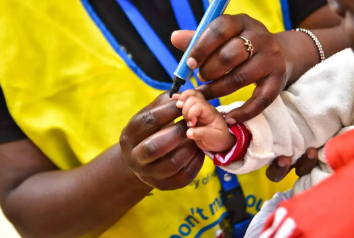

Kenya is not ready to foot the bill for childhood vaccines when donor funding ends in 2029, a survey in 15 counties has said. Most vaccines for children used in Kenya are bought by Gavi, a Geneva-based financier.
Kenya was to lose Gavi funding in 2027 but the current government negotiated and the deadline was pushed to 2029.
At least 77 senior county officials from 15 counties were interviewed recently and all agreed that neither the national nor county governments show any readiness to handle the costs of immunisation independently once Gavi exits.
These vaccines cost about Sh36 billion every year but the government only provides Sh4 billion, being cost of freight and distribution.
Treasury has previously failed to timely disburse co-financing payments to Gavi. Earlier this year, the country experienced stockouts, which former Health Cabinet Secretary, Susan Nakhumicha attributed it to outstanding claims of unpaid funds for distribution.
The government owed the supplier between Sh1.5 billion and Sh2 billion.
“Vaccines should be accommodated in the national annual budget. I think they should factor it in the national budget because it needs a very huge sum of money,” said one county official.
The study, “Are we ready to transition from the Global Alliance for Vaccines and Immunization support? Perceptions from 15 Kenyan counties”, is published in the current issue of the Pan African Medical Journal.
Researchers surveyed the 77 health officials from 15 counties, finding widespread apprehension about the transition and an urgent need for strategic planning, stable funding, and capacity-building to prevent potential setbacks in vaccine coverage and public health.
“For the Gavi transition, I think our country and this county are not ready,” one official explained, pointing to the financial strain even under the current support structure.
Kenya entered the accelerated phase of Gavi’s transition in 2022 and has until 2029 to prepare for complete financial independence in vaccine procurement.
This study underscores the lack of awareness at both county and national levels regarding the full financial implications.
One respondent from Tharaka Nithi county said, “We don’t even know the cost of vaccines, so today, if we are told to budget, we wouldn’t be able to provide the required funds.”
The transition will likely be accompanied by a financial and logistical challenge for Kenya.
Respondents consistently expressed concerns about the sustainability of immunisation funding, given Kenya’s current dependence on donor aid for critical health programmes.
“Most of our programmes are funded by donors, especially in health matters,” stated another respondent, hinting at the potential disruption if Kenya does not secure a replacement for Gavi’s funding.
Beyond finances, logistical challenges — such as securing a stable supply of vaccines and managing the cold chain necessary for vaccine efficacy—are anticipated to strain the immunisation infrastructure.
Many respondents highlighted that equipment shortages and inconsistent supply of syringes are already affecting operations, a problem likely to worsen with Gavi’s exit.
“We anticipate more delays in procurement and expect that stockouts will be more frequent when Gavi withdraws,” a health officer said If Kenya fails to address these funding and logistical gaps, the consequences could be dire.
Access to vaccines could become limited, increasing the likelihood of out-of-pocket expenses for communities.
This situation may lead to a drop in vaccination rates and a resurgence of vaccine-preventable diseases, the study says.
Officials voiced concerns
about outbreaks in marginalised and
rural areas, with one official predicting that “those diseases of old age”
could resurface if the government is
unable to fund immunisation.




